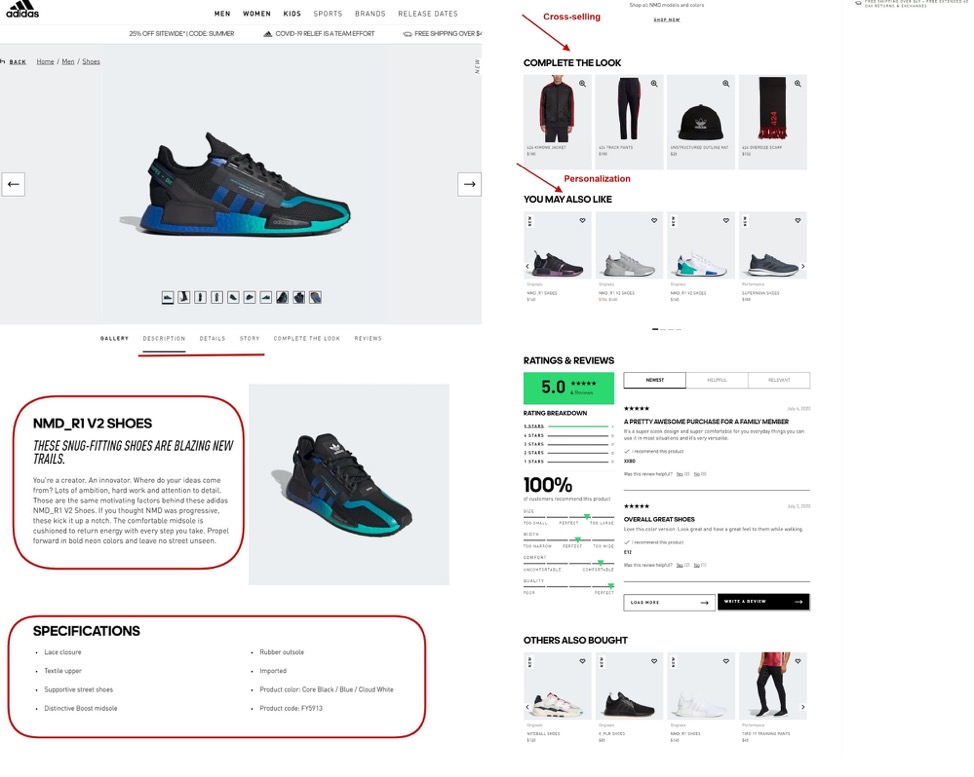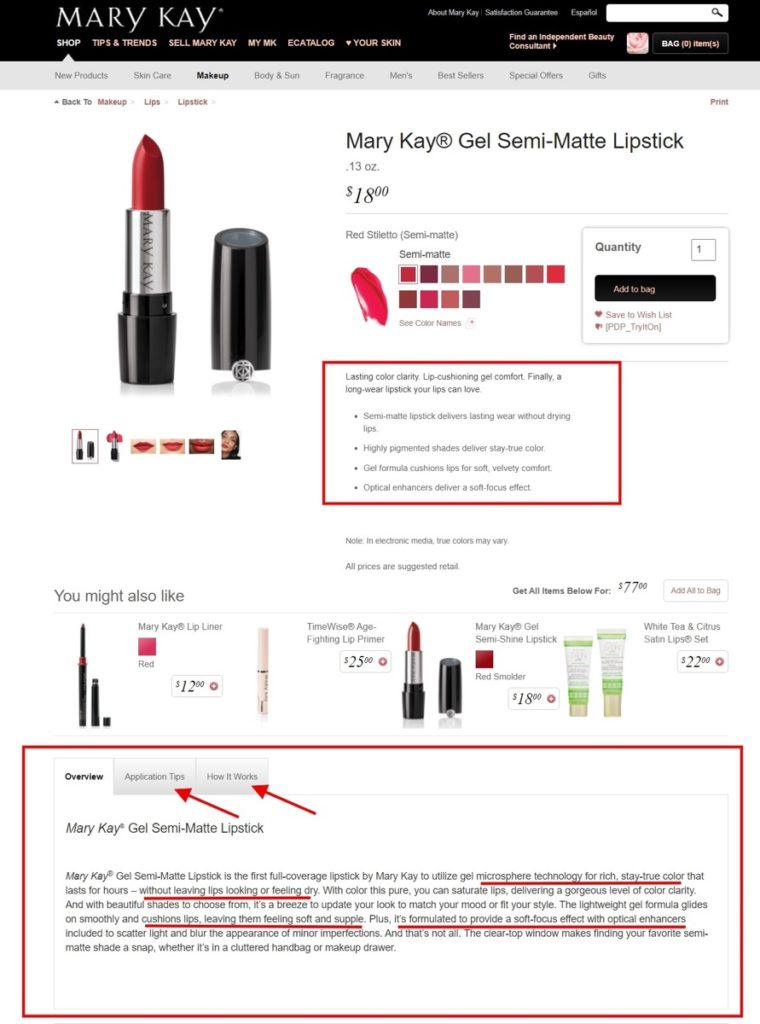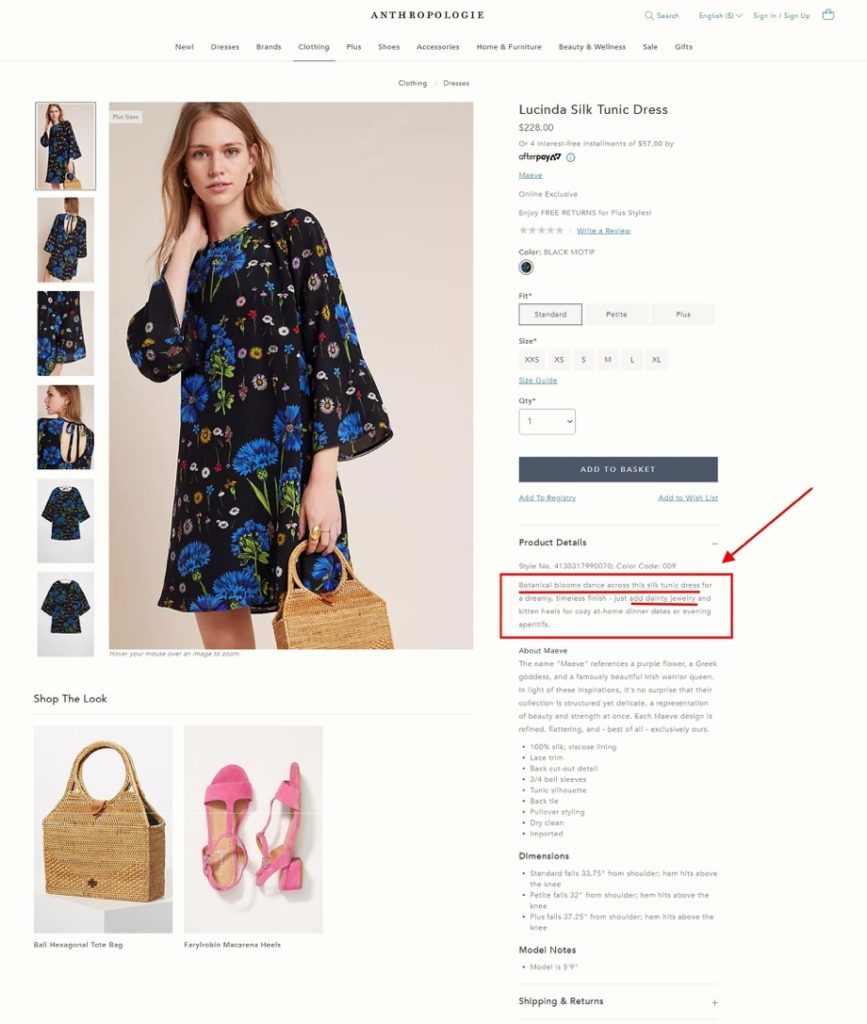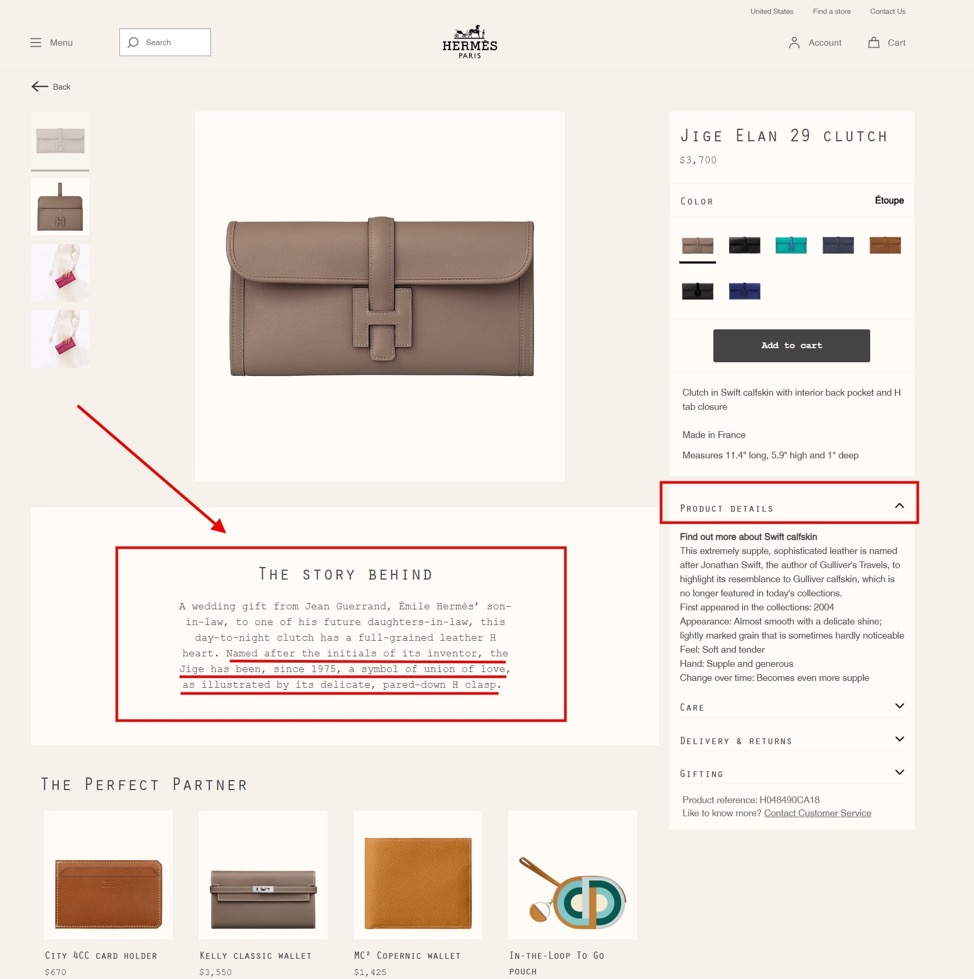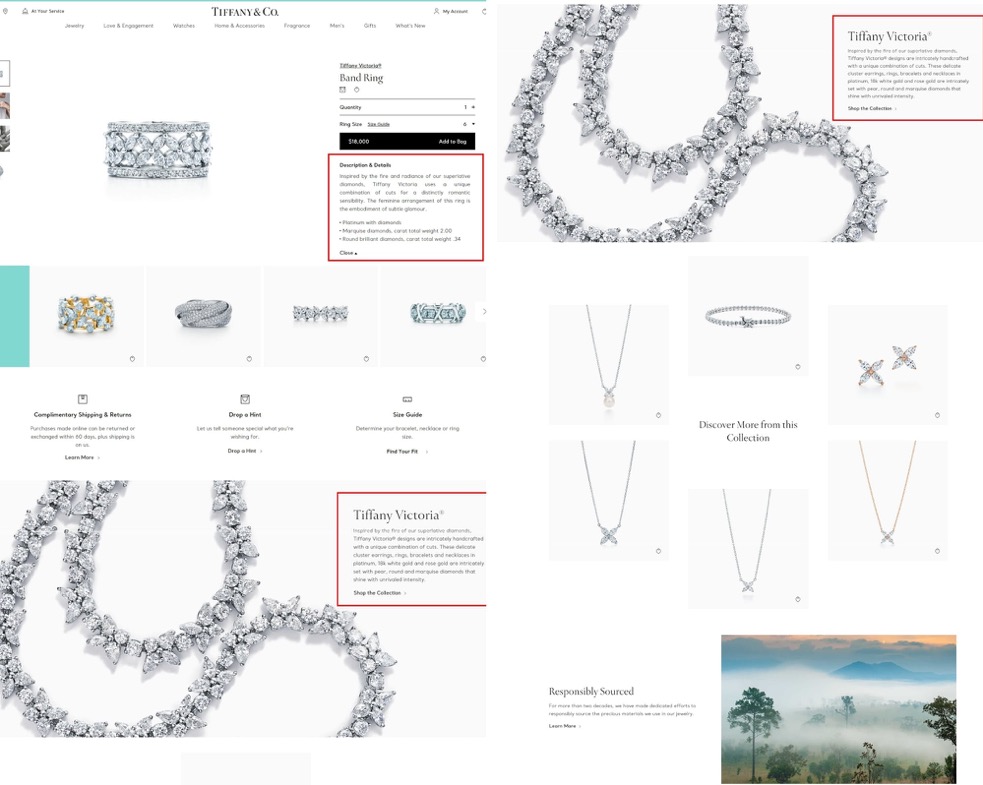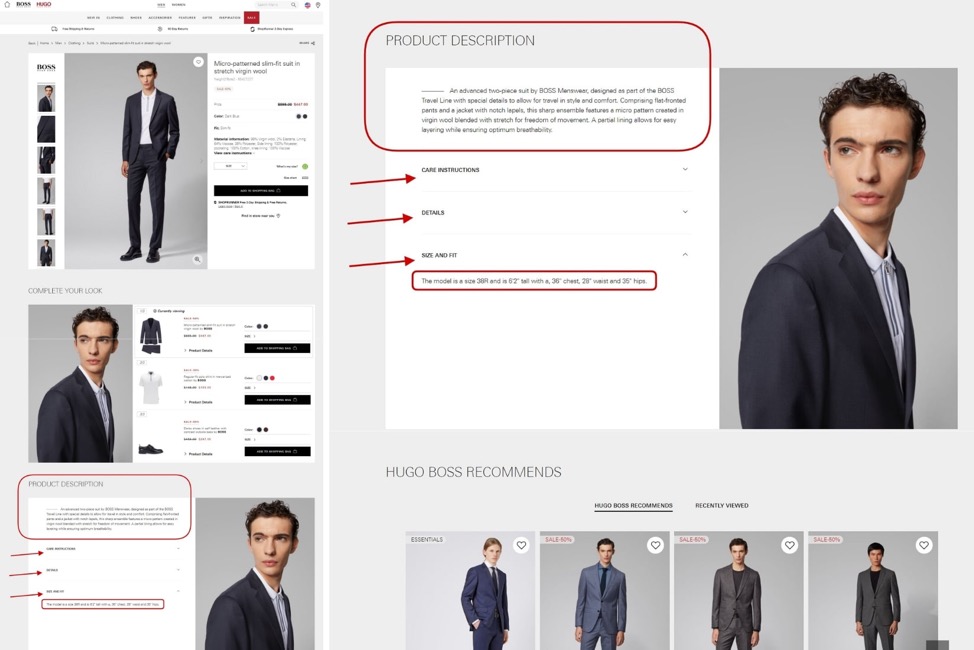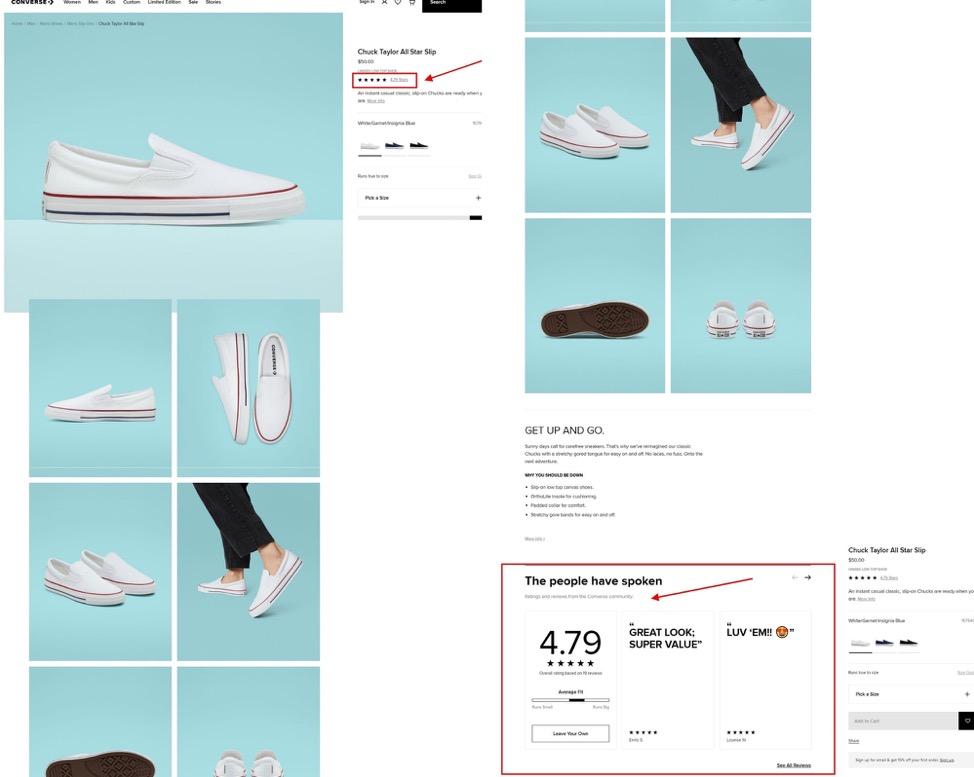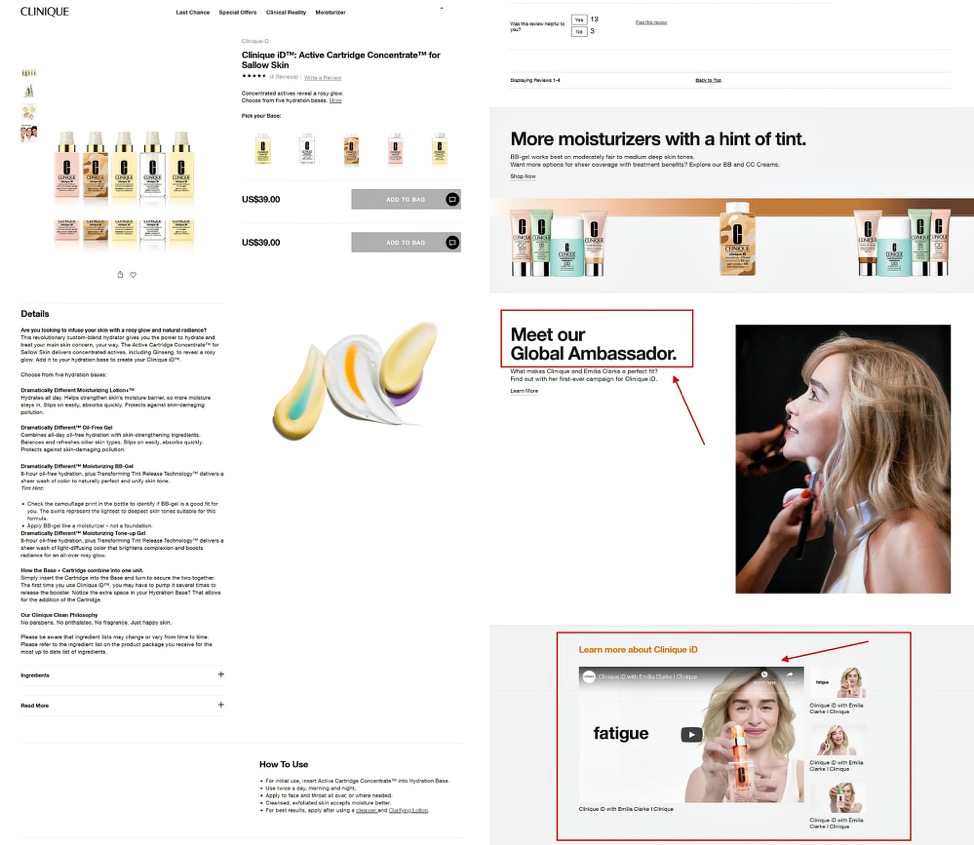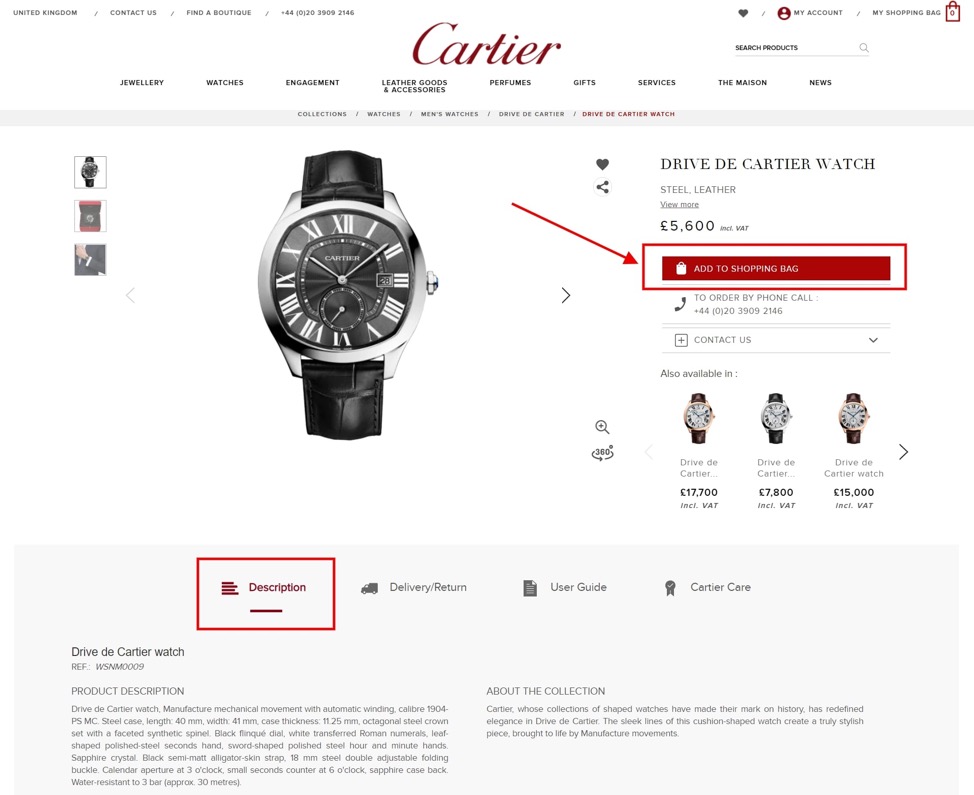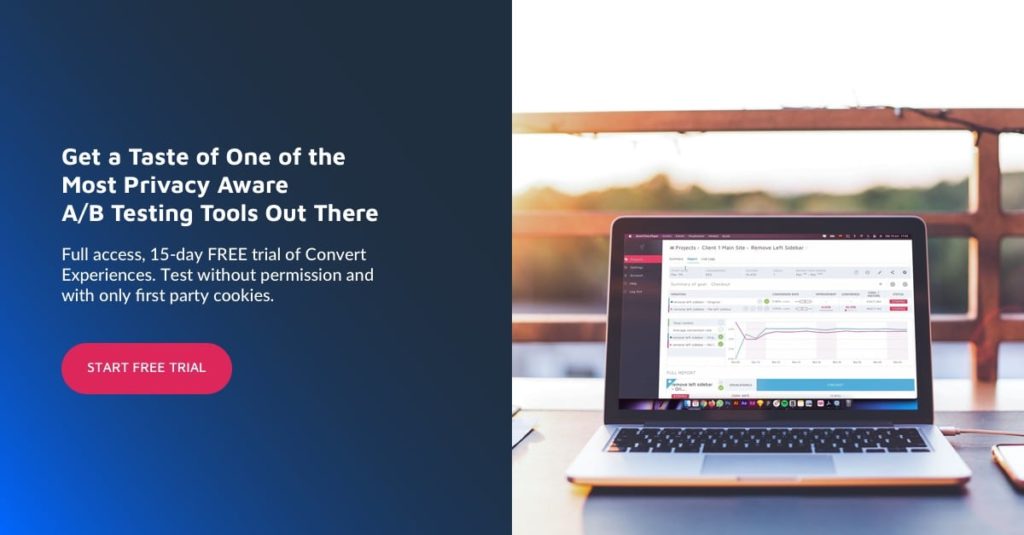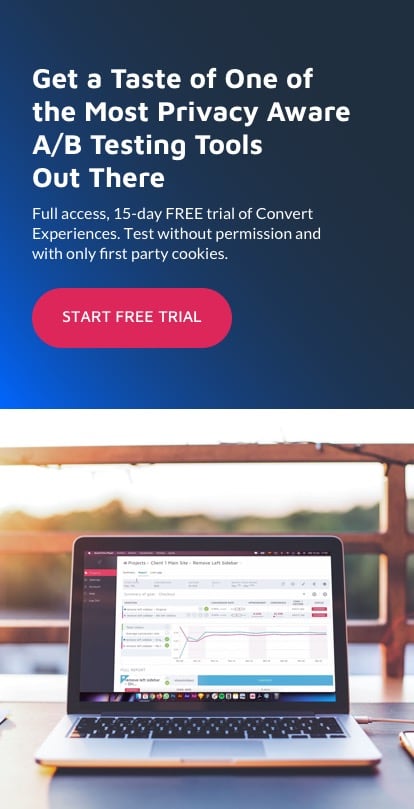10 Tips to Write Persuasive Product Descriptions
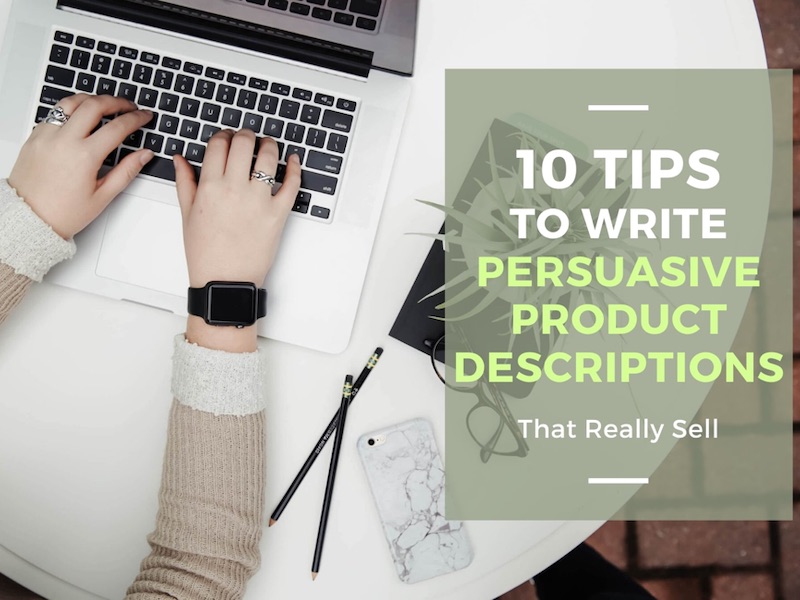
There’s no denying that the influence of social psychology plays a substantial role in our everyday lives. Whether we notice it or not, we fall under its sway all the time. Plus, it’s more than fair to say that the science of persuasion is especially relevant in the sphere of eCommerce as, after all, if product descriptions and page elements are able to convince a customer to purchase something in an online store, then they work. But what defines the success of such texts?
Without a doubt, product descriptions are among the most important product page elements that can influence the behavioral patterns of users and urge them to make purchase decisions. Of course, there is a technical side to it as well, so, in many cases, it makes sense to turn to eCommerce developers for assistance or Magento 2 consulting.
In this article, we’ll give you 10 recommendations on the dos and don’ts of writing persuasive product descriptions as a technique to convert users and increase an eCommerce website’s sales. We’ll also gladly share examples of the descriptions of renowned brands.
Tip 1: Relate to Your Audience
The art of persuasion starts with personalization. Therefore, among the first things you can do when crafting your product description is to address the readers with “you”, keeping in mind a single person who sees this text. As you describe your product or service, try to make your text geared towards every individual as opposed to a broad vague audience. Such messages can create a dialogue and the illusion that you’re addressing this specific user.
The approach that highlights those qualities and points that your target audience can relate to is another thing that determines whether your product description will work or not. You have a clear vision of who you’re writing to, what these people are into, and what matters to them. Therefore use that tone and those words that’ll allow you to “click” with your audience. Asking questions is another thing to note.
By showing that you’re on the same page with the prospect, you have a bigger chance to persuade them to buy the product. One more personalization element that can do that is the personalized product pick section that collects things that a user might fancy on the basis of their earlier buys.
Let’s take a look at the NMD_R1 V2 sports shoes page on the official Adidas website. The product description is well-targeted and uses the “you” approach and compares the qualities the users cherish with those of the shoes. Here’s what the extract reads:
You’re a creator. An innovator. Where do your ideas come from? Lots of ambition, hard work, and attention to detail. These are the same motivating factors behind these Adidas NMD_R1 V2 Shoes.
Tip 2: Highlight Product Value
Nothing speaks better than the actual value your customer can gain from purchasing the product you are offering. Yes, you can use a bunch of fancy but meaningless words such as “top-notch”, “outstanding”, and “marvelous”, yet they don’t really describe the product in its essence.
So if you’re trying to answer the question of “how to write persuasive product descriptions”, double down on the value. Focus on those qualities and strong points that can help your customer in some way solve a common issue that they may encounter. By doing so, you can motivate your clients to buy the product.
For instance, below is a description of the Gel Semi-Matte Lipstick on the official Mary Kay website. Apart from separating the description from tips on how to apply the product and some specifications of how it works, they accent the strong sides of the lipstick that customers can take advantage of. Some of these include: “technology for rich, stay-true color”, “without leaving lips looking or feeling dry”, and “the clear-top window makes finding your favorite semi-matte shade a snap, whether it’s in a cluttered handbag or makeup drawer”.
Tip 3: Catchy Wording Works
When applying wordplay, splashy openers, or humor, you can capture the attention of your users. Puns, jokes, and interesting lexical constructions are eye-catching, nevertheless, they aren’t obligatory. And if you’ve decided to use them, then you must use them scrupulously. Keep in mind, that play-on-words aren’t always appropriate, for instance, they rarely appear in descriptions of luxurious and expensive goods, whereas are fun to use for items for children.
Giving you a persuasive eCommerce product description sample of such, here’s how the official Anthropologie website describes the Lucinda Silk Tunic Dress: “Botanical blooms dance across this silk tunic dress”. Further on they give advice on what to wear to complement the look, some words about the collection, and other details.
Tip 4: Use Storytelling
Another great “move” is telling your customers a story in the product description. It can be based on the actual history of the item’s making, a described scene, or something fictional that mixes the background with the item details.
Among the persuasive product description examples with storytelling is that on the official Hermes website. In the description of the Jige Elan 29 Clutch, Hermes tells the story behind the creation of the item: “Named after the initials of its inventor, the Jige has been, since 1975, a symbol of union of love, as illustrated by its delicate, pared-down H clasp.” In separate sections, there’s more information on which year it first appeared on the market, materials, dimensions, etc.
Tip 5: Mind Text Length
An often occurring question is how long should a product description be? Honestly, the fairest answer is, it depends. If a product is quite self-explanatory and needs no lengthy introduction, then keeping it short is the way to go. Your message doesn’t necessarily have to be very extensive to be persuasive.
On the other hand, in case the product you’re selling is complex, giving additional details on how to use it, how to take care of it, what are its peculiarities, surely won’t hurt.
The example below is taken from the official Tiffany & Co. website. The Band Ring from the Victoria collection is an item worth 18 thousand USD, and its description was fit into 50 words, mentioning all the key pointers including an intro, the collection name, the used metals, how many diamonds it has, and their total carat weight.
Tip 6: Split & Organize Data
The next thing worth mentioning is about structuring information on the product in a proper way. The layout in much influences perception and browsing behavior. According to Dr. Robert Cialdini, an Arizona State University professor emeritus of psychology and marketing:
Persuasion is no longer just an art, it’s an out-and-out science.
Having everything squashed together can result in poor readability and user experience. This is why you must make sure that the details on the product and the description are divided logically.
To illustrate, this is a screenshot of a suit product page on the official Hugo Boss website. As you can see, the price, color variations, fit, and material are given at the top of the page. The more extended description, care instructions, and size & fit sections are placed lower. Large images and information on the sizes of the model who’s wearing the suit are also available.
Tip 7: Use Client Reviews as Back-up
A powerful tactic to not overlook deals with powering your product pages with the feedback from those who have purchased this item and can share their thoughts on it. That said, generally, product descriptions that convert are those that can be proven in this or that way. Therefore, it is vital to encourage customers to give a rating to the product, leave a review, even better if with uploaded images. In return, you may offer them a discount, a coupon, or some other bonus for doing that.
Such social proof that the item you’re showing and describing really meets expectations can influence other shoppers to add items to the cart and order. As seen on the screenshot taken from the official Converse website, there’s a star rating at the top of the page that can take users to the section with client reviews that’s right below the description. This block has an outstanding heading: “The people have spoken”. It also shows the grade that the customers have rated the item with, a scale with its “fit”, as well as extracts of the clients’ comments.
Tip 8: Brand Ambassadors & Authority Figures
Having an opinion leader represent your brand or product line is one more favored persuasion strategy. For influencer marketing reasons, numerous companies around the world team up with famous figures for celebrity endorsements.
As such, here’s a persuasive online store description sample that’s backed-up by a brand ambassador. The official Clinique website as of recent has Emilia Clarke as the global representative of the Clinique iD line. Apart from explaining the difference between the five hydration bases and their pros in the description texts, the use of the Clinique iD line is demonstrated by Emilia.
Tip 9: Test Your CTAs
Your choice of the call to action text is no less vital than a strong product description. It has been proven that some CTAs are more effective for certain target audiences. Ordinarily, words that create an element of urgency (“Limited offer”, “Buy now”, “Limited edition” or “Last chance”) are quite effective.
For this reason, conducting A/B tests is one of the ways to determine which combination works best specifically for this product group. Usually, in the course of the test, part of the users see one variation, and the other part sees a second option. In the end, click through rates and other metrics help to conclude which of them is best.
Check out this transparent A/B Testing tools comparison we compiled, highlighting all the details you need to know to pick the best A/B testing tool.
For example, the official Cartier website uses the “ADD TO SHOPPING BAG” call to action button text with all uppercase letters. At the same time, the headings of the “Description” tab and the ones neighboring it are regularly capitalized.
Tip 10: Mind SEO
Finally, the last thing to bear in mind as you craft your product descriptions is search engine optimization. By inserting keywords in the product naming, the image Alt texts, and the descriptions, you can increase your chances for the item to be found faster and easier by search engines. Tagging and metadata are more points not to miss, and it is also advised to use bullet points in descriptions to help the engines pitch data into snippets.
Have a look at the product page on the official Chloé website. Instead of giving the item’s article name and number, they use an SEO-friendly “CHECKED COAT” in the product title and use its keyword combo in the description too: “Checked coat for women in a wool blend with a vibrant blue-play colorway”.
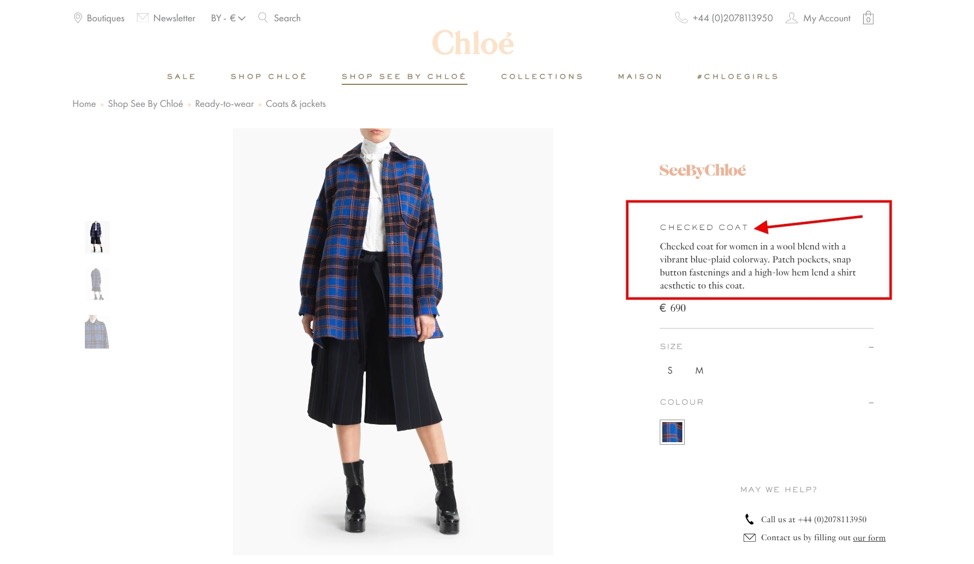
Final Word
Summing up the given above, there are many factors that need to be taken into consideration as you put together your ultimate descriptions. You have to keep in mind your target audience, think the wording and text length through, organize it properly, and not forget about the SEO side of the deal. Hopefully, you’ve found these examples of persuasive product descriptions to be helpful for creating your own ones.


